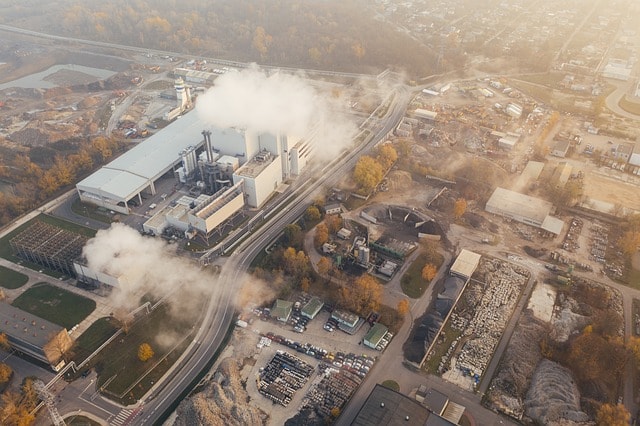What is Carbonfund?
Overview of the mechanism
Carbonfund.org is a 501(c)(3) not-for-profit organization dedicated to providing carbon offsetting and greenhouse gas reduction options. It serves individuals, businesses, and organizations by purchasing and retiring certified carbon offsets on their behalf. This organization offers a variety of project types, including renewable energy, reforestation, and energy efficiency. All projects that aim to reduce carbon footprint. By supporting these projects, Carbonfund.org helps mitigate the effects of climate change and promotes sustainable development.
H3: Fund General Characteristics
Carbonfund.org sources carbon credits that are verified by reputable standards such as the Verra carbon standard and the Gold Standard. The organization has played a significant role in developing four REDD+ projects in Brazil, adhering to VERRA and Climate, Community, and Biodiversity standards. These projects focus on reducing emissions from deforestation and forest degradation while promoting biodiversity and community benefits.
H3: Investment Mandate
The primary investment mandate of Carbonfund.org is to prioritize projects that meet high environmental and social standards. This ensures that the projects not only contribute to carbon emission reductions but also support broader sustainability goals. By investing in such projects, Carbonfund.org maximizes the positive impact on both the environment and local communities.
Understanding Carbon Emissions
What are carbon emissions?

Carbon emissions are the result of human activities releasing carbon dioxide (CO2) and other greenhouse gases into the atmosphere. These emissions are a major contributor to climate change, which poses significant threats to the environment and ecosystems. Understanding carbon emissions is essential for developing strategies to reduce their impact.
H3: Importance of Reducing Carbon Emissions
Reducing carbon emissions is crucial to combating climate change and mitigating its devastating effects. Efforts to reduce emissions include enhancing energy efficiency, adopting renewable energy solutions, and implementing sustainable practices. These initiatives not only help protect the environment but also promote healthier and more resilient communities.
Calculating Your Carbon Footprint
How to calculate your carbon footprint
Calculating your carbon footprint involves using online calculators to assess factors such as energy consumption, transportation habits, and daily activities.
These tools help determine your overall greenhouse gas emissions, providing a clear picture of your environmental impact. Accurate air well measurement is the first step towards reducing your carbon footprint.
H3: Factors that Affect Your Carbon Footprint
Several factors contribute to your carbon footprint, including energy consumption, transportation, diet, and daily habits.
By understanding these factors, you can identify areas where you can make changes to reduce your emissions. For instance, switching to renewable energy, using public transportation, and adopting a plant-based diet can significantly lower your carbon footprint.
Reducing Your Carbon Footprint

Simple ways to reduce your carbon footprint
There are many simple ways to further reduce carbon emissions and your carbon footprint, such as reducing energy consumption, using public transportation, eating a plant-based diet, and adopting sustainable daily habits. Additionally, purchasing high-quality carbon reduction credits linked to reliable projects can help offset your remaining emissions.
H3: Tips for Reducing Carbon Emissions in Daily Life
Identify opportunities to reduce energy use, think about how you can reduce energy and carbon emissions in daily decisions. Simple steps such as switching off lights and electronics when not in use, opting for energy-efficient appliances and vehicles, and minimizing waste can significantly reduce your carbon footprint.
Carbon Offset Projects
Types of carbon offset projects (e.g. reforestation, renewable energy)
Carbonfund.org supports three types of carbon projects: renewable energy, energy efficiency, and reforestation of forests. Planting trees is crucial for carbon sequestration and emissions reduction, making it a key component of carbon offset projects aimed at combatting climate change.
Benefits of supporting carbon offset projects
Supporting carbon offset projects helps reduce carbon dioxide emissions, promotes sustainable development, and contributes to the fight against climate change.
These projects not only provide environmental benefits but also support local communities by creating jobs, improving infrastructure, and enhancing the quality of life. By investing in carbon offset projects, you can make a meaningful contribution to global sustainability efforts.
How Carbon Credits Work

What are carbon credits?
Carbon credits serve as a method to offset carbon emissions by directing funds towards projects that aim to reduce greenhouse gas emissions. Each carbon credit represents a reduction or removal of one metric ton of carbon dioxide equivalent (CO2e) from the atmosphere. These credits can be purchased to offset emissions that cannot be reduced directly, thereby helping to mitigate climate change.
How are Carbon Credits Used to Offset Carbon Emissions?
Carbon credits are used to offset carbon emissions by supporting projects that reduce greenhouse gas emissions, such as renewable energy and reforestation. By purchasing carbon credits, individuals and organizations can compensate for their emissions and contribute to global efforts to reduce greenhouse gas concentrations in the atmosphere.
Purchasing Carbon Credits
How to purchase carbon credits
You can purchase carbon credits through Carbonfund.org, with rates starting at $10.00 per metric ton. The process is straightforward and involves selecting the desired price and amount of carbon credits and completing the purchase. These credits are then retired on your behalf, ensuring that your emissions are effectively offset.
Rate Comparison and Certification Process
Carbonfund.org offers high-quality carbon credits that are verified by third-party organizations, ensuring the credits meet high environmental and social standards. Comparing rates and certification verification processes among different providers can help you choose the best option for your needs. Ensuring that the credits are certified by reputable standards like Verra or the Gold Standard is crucial for their credibility.
Supporting Carbon Offset Projects
Find a project to support
Browse Carbonfund.org’s portfolio of carbon offset projects and choose one that aligns with your values and goals. Consider projects that focus on renewable energy, reforestation, or energy efficiency. Supporting these projects helps reduce carbon dioxide emissions and promotes sustainable development.
Become a Partner
Partner with Carbonfund.org to support carbon offset projects and contribute to the fight against climate change. Partnerships can involve financial contributions, collaborative projects, or promotional support. By partnering with Carbonfund.org, you can make a significant impact on reducing global greenhouse gas emissions.
Impact of Carbon Offsetting
Community benefits and endowment
Carbonfund.org’s projects benefit local communities and contribute to sustainable development. These projects often create jobs, improve local infrastructure, and enhance the quality of life for residents. Supporting carbon offset projects helps build resilient communities that can better adapt to climate change.
Project Aggregation and Risk-Sharing Mechanisms
Carbonfund.org uses project aggregation, funding and risk-sharing mechanisms to ensure the success and sustainability of its projects. By pooling resources and spreading risk across multiple projects, the organization maximizes the impact of each contribution. This approach ensures that carbon offset projects deliver long-term environmental and social benefits.
Choosing the Right Carbon Offset Program
Key takeaways for choosing a program
When choosing a carbon offset program, consider the types of projects supported, the certification process, eligibility criteria and rate comparison. Look for programs that support projects with high environmental and social standards and that are verified by reputable organizations. Comparing rates and understanding the certification process can help you make an informed decision.
Terrapass vs. Carbonfund.org: How They Compare
Compare Terrapass and Carbonfund.org’s sustainability options, project types, certification process, and rates to determine the best option for your needs. Both organizations offer a range of carbon offset projects, but their approaches to project type, and pricing may differ. Evaluating these factors will help you choose the program that best aligns with your goals and values.
By understanding and actively engaging in carbon offsetting through Carbonfund.org, individuals, companies and organizations can take meaningful steps towards reducing their carbon footprint and contributing to a more sustainable future.
